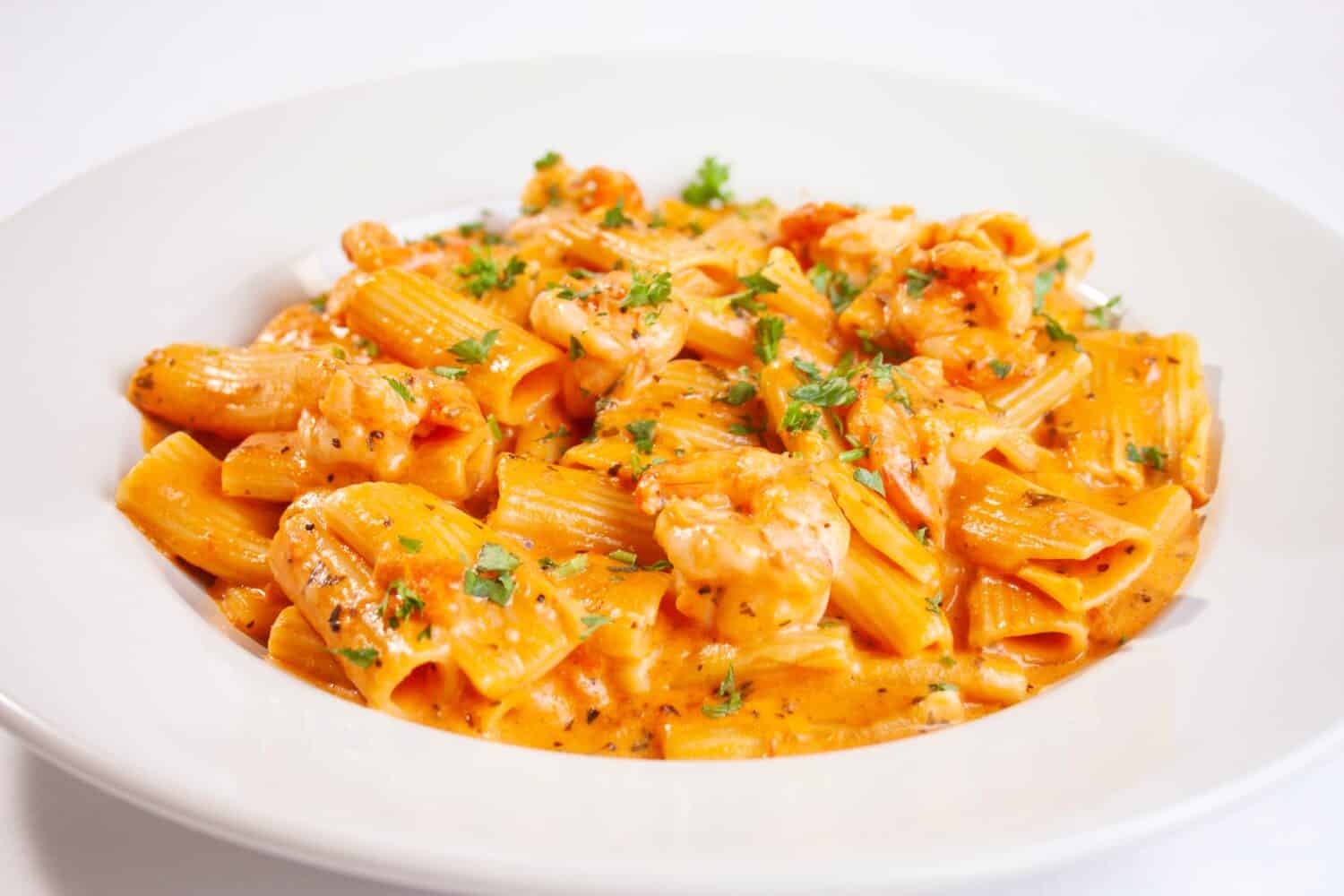What’s better than buttery pasta? The fact that there are so many kinds to choose from! When comparing ziti vs. penne, there are 3 major things that set these pasta types apart. While both noodles are hollow and tubular, Ziti noodles are short and thick with blunt ends, and a smooth exterior. Penne pasta is longer than Ziti and cut into points, with either smooth or ridged sides. Dishes involving Ziti are often more like casseroles because the noodles cook very quickly. Penne pasta is more often a fresh pasta dish and commonly gets served al dente (via Paesana). While the two kinds of pasta may look similar in shape and appearance, these are the differences that can be worth knowing for choosing which one to cook with.
In this post, you’ll learn some of the history of ziti vs. penne pasta. Get some recipe ideas, and learn more about the ways in which they’re cooked. Whether you’re a pasta-making expert, or new to creating dishes of this kind, you’re in the right place to get down to the basics. Never again will you question the differences between ziti vs. penne pasta, or when to use them.
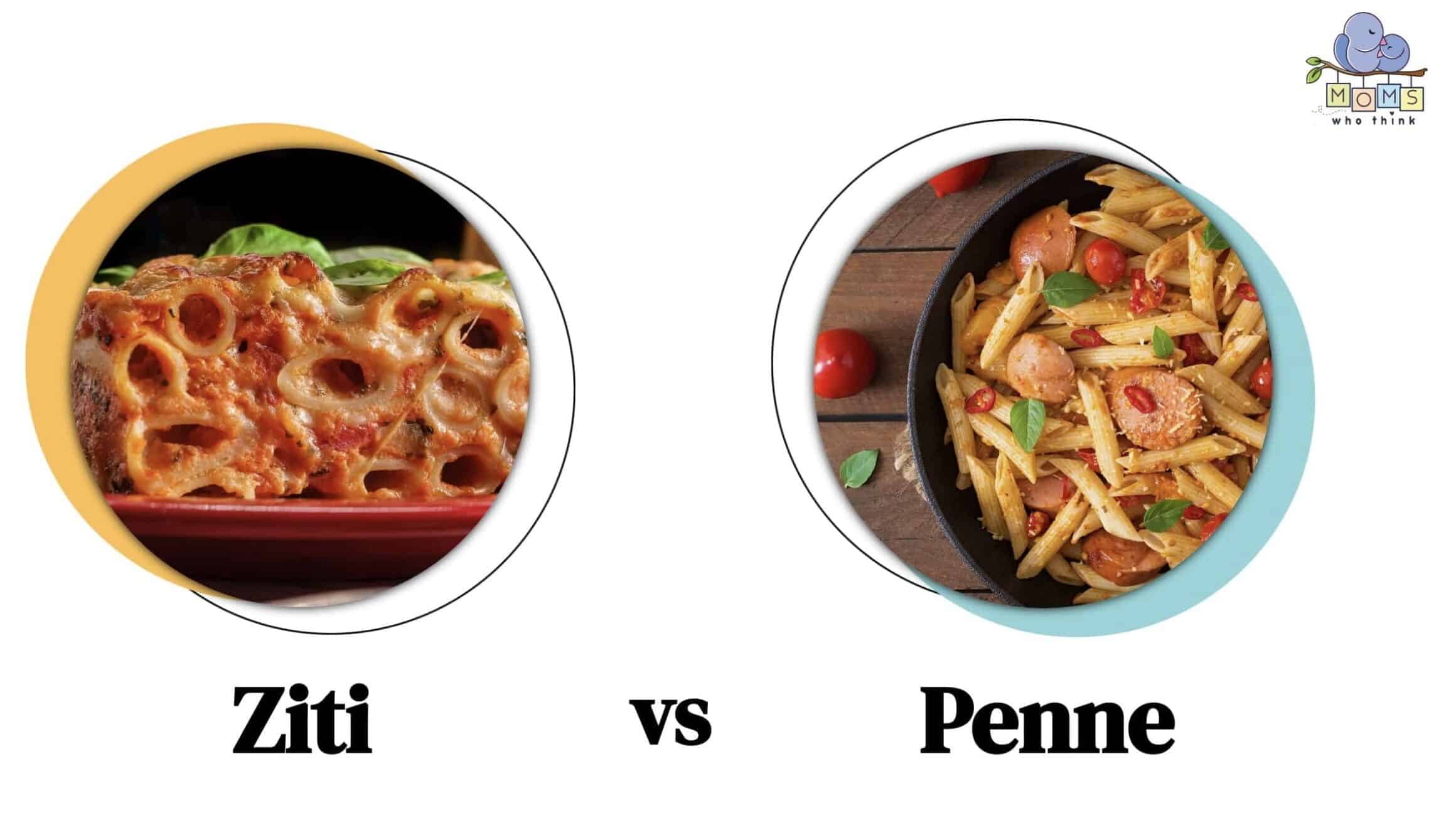
Ziti vs. Penne: What is the difference?
The biggest differences between ziti vs. penne pasta come down to the appearance, the size, and the way they are cooked in certain dishes. Since there are so many kinds of pasta, with many of the same ingredients, it's all the more important to know how these traits will impact the dishes they're used in. Size, and texture, can affect the cooking time of the pasta, and therefore its texture alongside other ingredients. Let's learn more about these individual pasta types.
What is Ziti Pasta?
Ziti pasta is compared to a short straw, with smooth sides and clean edges. It is thicker and shorter than penne pasta which means it cooks well in buttery dishes, often used in casseroles. The name ziti originates from the word “Zita,” which translates to bride. This is because it was traditionally served at weddings, read on to learn more about the history of this unique pasta (via Trattoria Il Panino).
History And Origin of Ziti Pasta
Traditionally served as a wedding pasta, this ziti hails from the Campania region in Naples, Italy. It would be prepared for big celebrations, Sunday feasts and special occasions. Usually, the whole family helped in the preparation of the dish. One of the most common ziti dishes included a meat sauce or ragu. Regional dishes developed with the use of ziti pasta including the 15th-century recipe “ragu alla Genovese.” The reason this pasta type pairs os well with meat sauces is that the shape of the pasta retains the chunky, flavorful sauce in all kinds of savory dishes (via Pasta Project).
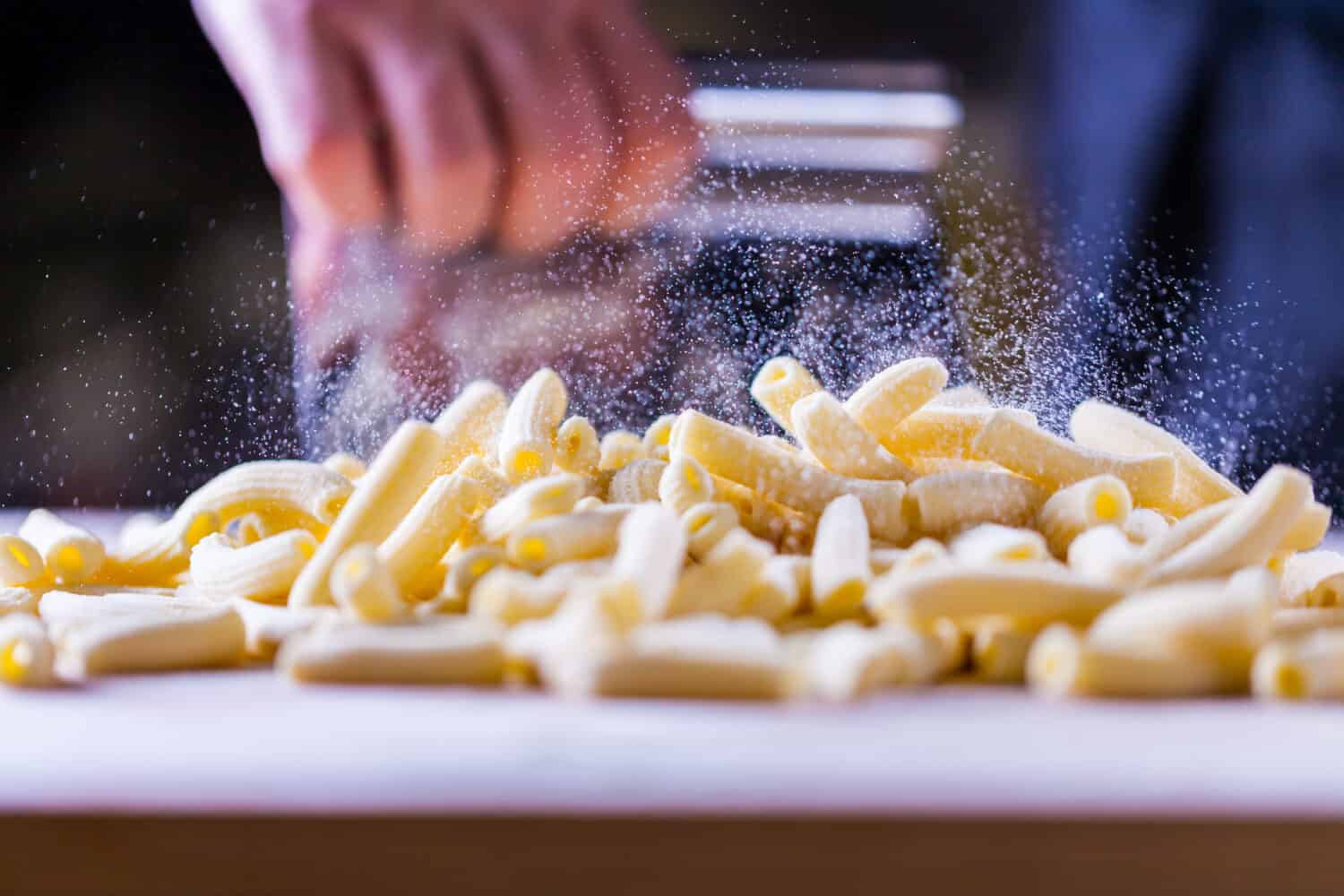
Ziti pasta is made with durum wheat flour. There are gluten-free varieties available for purchase.
©Stereo Lights/Shutterstock.com
How Ziti Pasta Is Made
Ziti pasta is made with very fine wheat flour. Combined into a dough, it is professionally rolled out and shaped into the hollow pasta that we know and love. Typically it's smooth, although occasionally you'll find ridged ziti pasta, it depends very much on the retailer. Though it would be possible to make from scratch at home, it will have a homemade appearance because it's hard to get that structure without the right tools and resources (via Barilla).
Popular Dishes Using Ziti Pasta
We've already mentioned a couple of the classic ziti dishes, but let's take a look at some others:
- Ziti Alfredo with Vegetables Recipe
- Kid-Friendly Cheesy Sausage Ziti Recipe
- Mushroom Beef Baked Ziti Recipe
- Four Cheese Baked Ziti Alfredo Recipe
- Baked Ziti Recipe
- Chicken and Ziti Casserole Recipe
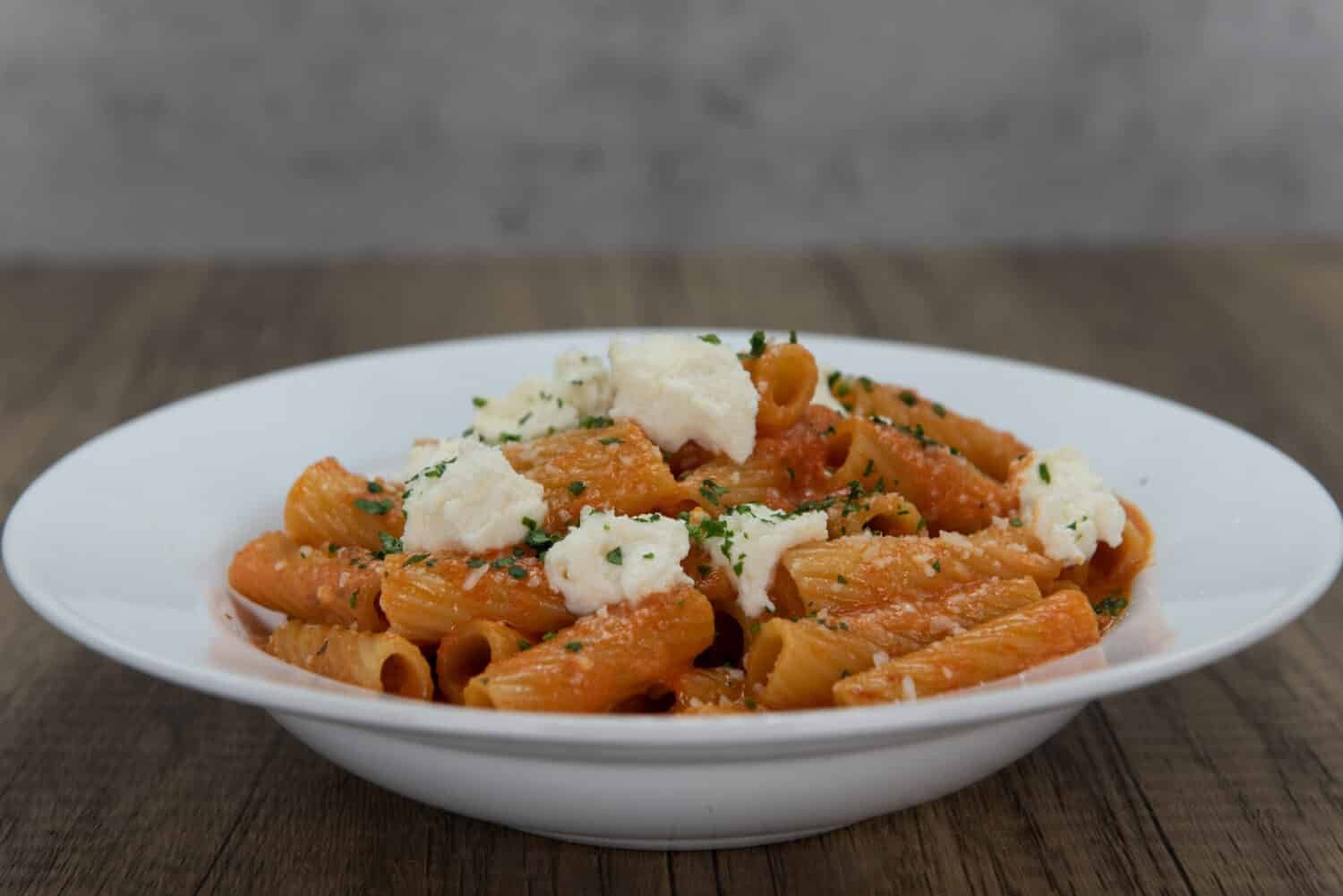
Ziti pairs well with red sauces, cheeses, and all kinds of seasonings.
©Jon Osumi/Shutterstock.com
What is Penne Pasta?
Penne is a hollow pasta with angeled edges that resemble a quill. This shape is actually how it gets its name, since “penne” translates to pen. There are a couple types of penne including “rigate” which is ridged, and great for retaining sauces. The other kind is “lisce” which translates to smooth and goes well with more liquid, creamy sauces. Penne also comes in “pennette” which is longer and narrower, and “mezze” and “pennoni” which are smaller and larger respectively (via The Pasta Project).
History And Origin of Penne Pasta
Penne pasta has a historical birth date. Penne dates back to 1865 and is credited to the pasta maker Giovanni Battista Capurro of San Martino d’Albano. He filed a patent for pasta cut diagonally, reminiscent of a fountain pen. The shape was so popular that it spread throughout Italy, with multiple variations of the classic penne pasta, always with that same diagonal cut (via Pomí).
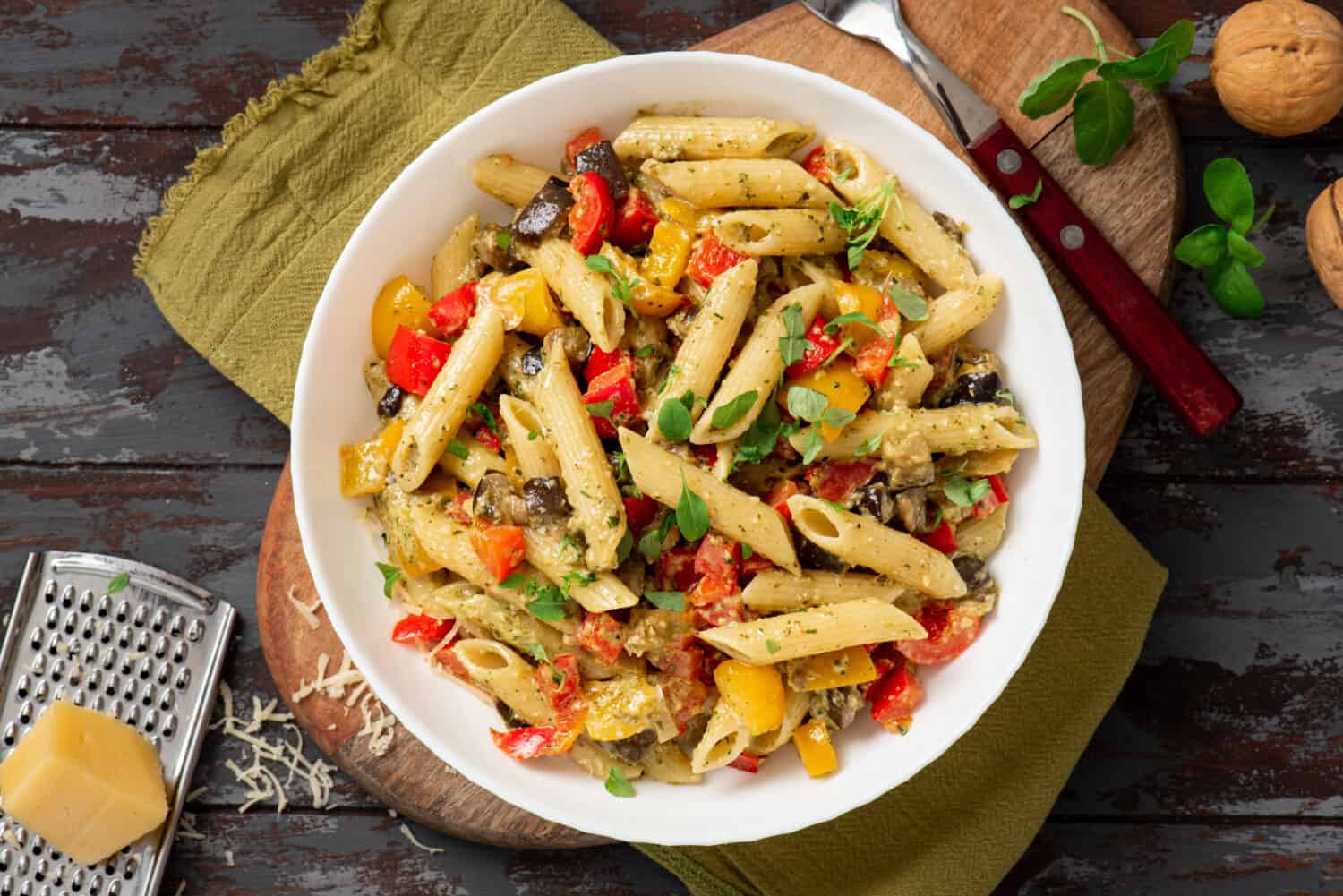
The classic penne pasta comes with ridges and the classic angled cut edges.
©Svetlana Monyakova/Shutterstock.com
How Penne Pasta Is Made
Penne pasta was traditionally hand-cut with scissors, which squashed the hollow interior of the pasta, and created jagged edges. The creation of a machine that would cut the pasta at a sharp angle while preserving the overall shape is outlined in the original patent from 1865, which is archived at the Central Government Archives in Rome. All that to say, while penne pasta can be cut at home from traditional pasta dough, it will have a much more homemade look than storebought varieties. If you really want to create a penne pasta recipe from scratch, be sure you have the right tools to try to create the shape. Otherwise, there are numerous penne pasta varieties at the store, and gluten-free options as well.
Popular Dishes Using Penne Pasta
Penne pasta pairs well with both heavy and lighter sauces. Let's take a few of these great recipes:
- Creamy Pink Penne Pasta Recipe
- Penne and Vodka Sauce Recipe
- Penne with Gorgonzola Recipe
- Cacciatore-Style Penne Recipe
- Penne with Italian Eggplant and Mushroom Sauce Recipe
- Penne Pasta Zuppa Recipe
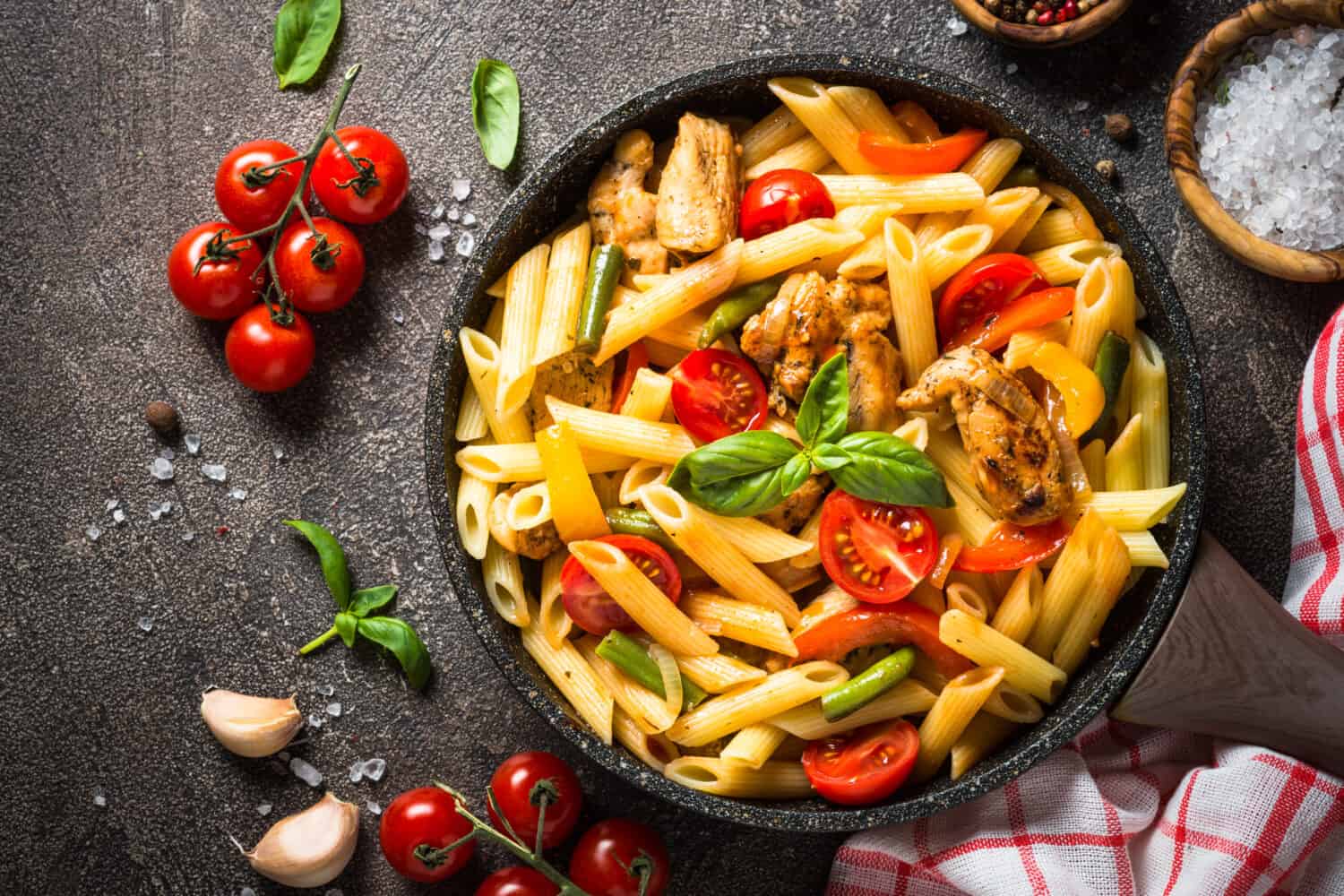
With fresh veggies, hot sauces, or even in chilled salads, there's a reason penne pasta is so popular.
©nadianb/Shutterstock.com
Nutritional Value of Ziti vs. Penne Pasta
Take a look at this handy nutritional comparison chart between ziti vs. penne pasta dishes. As you can see, penne is higher in calorie, protein, carbohydrates, and fat content. This may be due to the size of the pasta, the way it's made, or the dishes in which it's included. If you're looking to increase the nutritional quality of a certain pasta dish, you can change the protein of the dish, or add more vegetables. There are lots of ways to have pasta dishes be healthy and nutritional.
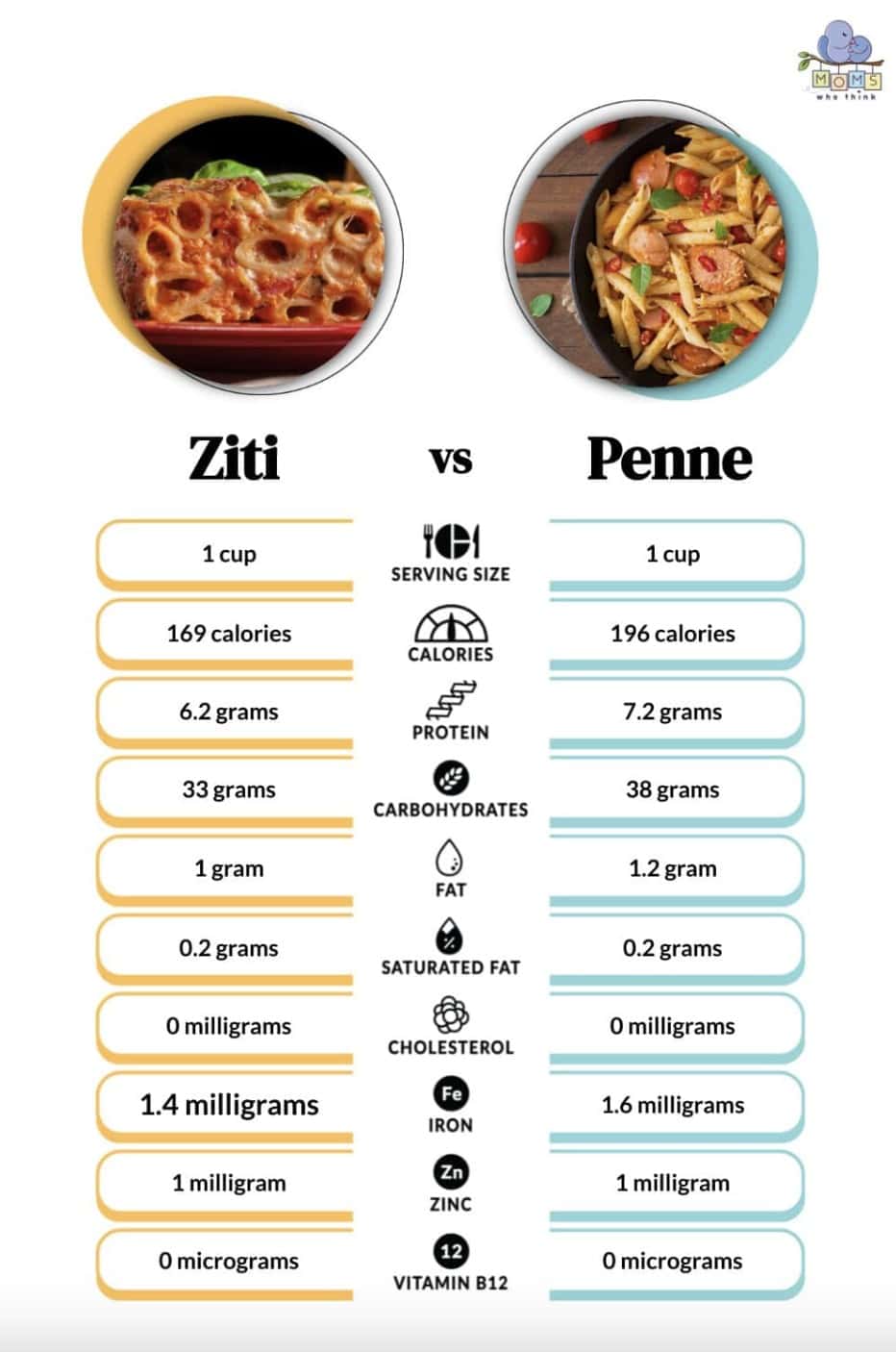
Ziti vs. Penne: Are They The Same Thing?
While ziti and penne have lots of similarities, especially in the realm of pasta, the differences are worth knowing. The appearance, texture, and size of each of these pastas affect how they are used in dishes. Also from a cultural standpoint, ziti and penne have unique backgrounds and histories. Ziti is traditionally cooked as a wedding pasta, while penne got its name from its shape, which is akin to a quill. While it's possible to substitute ziti for penne, and vice versa, the smooth exterior of the ziti may be less compatible with certain chunkier sauces. It won't ruin the dish, it just may not be in line with the recipe.
Possible Alternatives To Ziti And/Or Penne
As we've mentioned a few times, there are all kinds of pasta. Allrecipe counts some 27 types of pasta. From angel hair, and spaghetti, to bowtie, bucatini, ditalini, or flat fettuccine. There's corkscrew fusilli, Gemelli spiral pasta, gnocchi, lasagna sheets, linguini, macaroni, and manicotti. You can try dishes with egg noodles, orecchiette, macaroni, orzo, radiatore, ravoli, ragatoni, and a whole list of others. In short, there are so many kinds of pasta certain ones may substitute well for a ziti or penne pasta dish. Others will really change the texture and presentation of the dish, like spaghetti in a casserole. In whatever pasta you choose, have fun with it, and enjoy the creative ingredients that can be used for great pasta dishes.
The image featured at the top of this post is ©heathenphotog/Shutterstock.com
